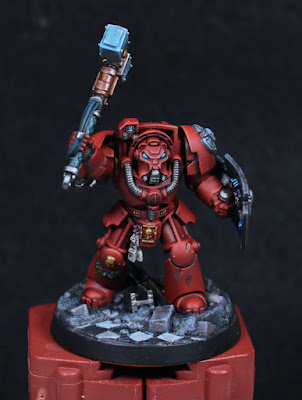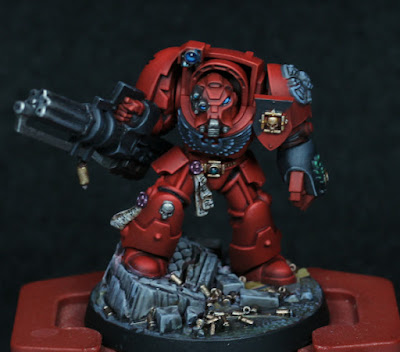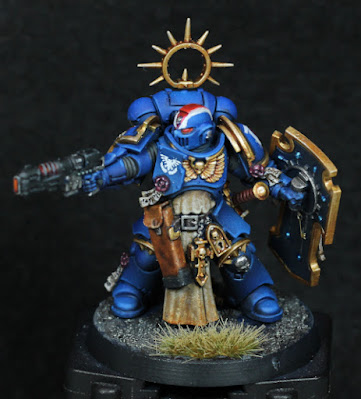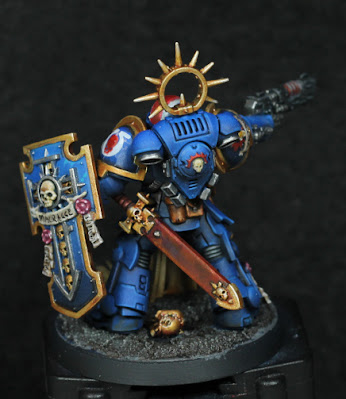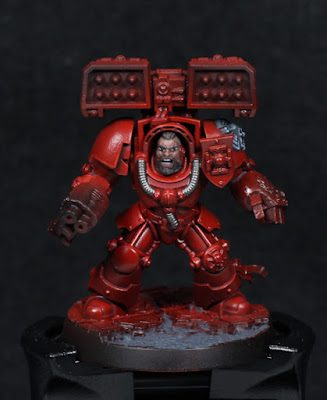 |
| More hammer! |
Another two Terminators finished just before the year's end, and bringing the total of models I'm allowed to buy up to 10.5! Only another two to go before the series is complete.
I finally finished the Imperial Fist, painted so just because I had a duplicate of the model and didn't want to paint it up as a Blood Angel again. It does bring some planning requirements with it, namely what colours to do? The helmet was painted up before I realised that actually Imperial Fist Terminators often come with white helmets, so I glazed it brighter with Dorn Yellow to make it trending towards white while still allowing other areas to be given a brighter treatment if need be. The storm shield is an example of this, and it admittedly took me a long while to figure out what colours to use on that, until I looked at the Imperial Fist insignia and realised white and black would be perfect. I could highlight the black details more, but at this stage didn't want to overdo it, and the white isn't given any shading because it's white and difficult to do that with.
I actually tried a little bit of oil paint on this model. There's a subtle OSL effect from the hammer, but I had such trouble with the oils that I kind of gave up on that idea. There's a slight white hint on the top of the left pauldron, and that oil worked great (possibly because it doesn't contrast with the already bright yellow), just not enough for me take it any further.
The base is predominantly blue and darker, to contrast and frame the model by mirroring the blue hint from the hammer. On the topic of thunder hammers, I've been giving a highlight to both ends up until now, however it occurred to me that the back end probably shouldn't glow - it's probably essentially a big capacitor and it's the front where a disruption field would be. So in future I might just drybrush highlight the front.
 |
| Someone call for a heavy flamer? |
Another duplicate model and I decided to try my hand at a small bit of converting. I had a spare (right hand) power fist from a Death Company kit, and the heavy flamer comes from Grey Knights. The besagew is just there to cover up some really terrible gap filling. It's not perfect by any means, but just different enough to set it apart from the other one (which is still being painted). The power fist, being on the right, is not painted black like the others on purpose. And now that I look at the photo, I realise I've not written anything on the scrollwork - so that will be shortly rectified.
The heavy flamer is painted up in colours mostly borrowed from the Aggressors. That's now my go-to for flamer cowling, even if it takes quite a good deal of effort! I haven't blackened the nozzles in this case for no reason really, other than there's probably enough force behind any spray that it's unlikely to give backwash that might burn that area.
This is probably the last post for this year; I doubt I'll finish anything more over the next few days, but I will make notes if I get anything interesting done. Then it's back to work and copious amounts of travel, so I'll see how I get on with the all the pending projects throughout next year.
-- silly painter.


